Painter's tape is an inexpensive asset to your painting project. But if you need to stain a surface, you may be worried about it bleeding through. Let's take a look to see if the stain will bleed through the painter's tape.
It is always a risk for stains to bleed through painter's tape if there are any gaps or spaces where the stain can get underneath. The key is to paint away from the painter's tape and ensure the tape is completely sealed before applying your stain.
If your stain bleeds through your painter's tape, it can add extra work. In this article, we will provide tips on how to combat stain bleeding through painter's tape. In addition, we will answer other frequently asked questions about painting projects, so read on!
How Do You Stop Stain From Bleeding Under Painter's Tape?
It's common for professional painters and DIYers to use painter's tape on projects. However, it's not uncommon for stains to bleed through even the highest-quality painter's tape.
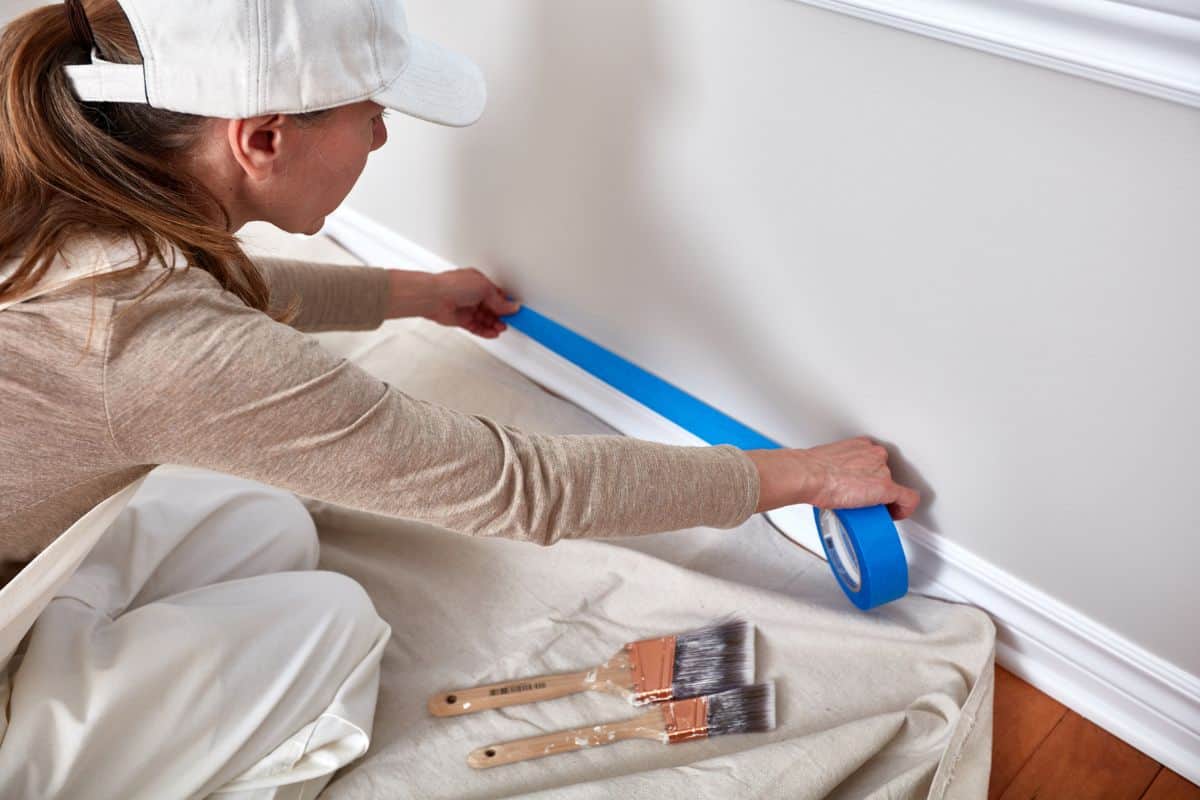
This especially happens when staining wood, as the stain soaks into the wood getting underneath the painter's tape. But is there anything that can be done about it?
There are ways to combat this issue. First, you want to ensure that you use high-quality painter's tape. Even though there is still a risk of stain bleeding through, you will lower your risk versus using a low-quality painter's tape.
Next, ensure that the surface you are painting is smooth and clean. If there are bumps and ridges on the surface, then the tape will have gaps where the stain can seep underneath.
Then clean your surface to remove any debris. Dirt and debris will stick to the painter's tape adhesive and create gaps where the stain can get to.
Once the area is clean, you will need to use your fingernail to seal the edges of the painter's tap. This will ensure that there isn't any space for the stain to enter.
Next, when applying the stain, brush away from the painter's tape. If you brush toward the painter's tape, there is a higher chance the stain will lift the tape and the stain will bleed through.
Lastly, don't go apply an immense about of stain on top of the tape. It's inevitable that you will get some stain on the tape in order to get a clean line. However, applying glops of stain will likely cause the stain to bleed through the painter's tape.
Are There Other Ways To Keep Stain From Bleeding Through Painter's Tape?
While the tips above are the best ways to keep stains from painter's tape from bleeding through, there are other options.
Some say that gel stain is less likely to bleed through than other stains. Gel stain is an oil-based varnish that is heavier than other stains. It is meant to sit on top of wood rather than soaking in as traditional stains do.
If gel stain works for the project, it is worth trying it. It is also less likely to blotch, which is common with traditional stains.
Other DIYers recommend using paint or caulk to seal off the edge of the painter's tape. It's tough to say if this is a good idea for your project, but it is worth a try.
Lastly, you can freehand the line with a fine brush. This does take a steady hand and experience painting, but if you feel confident in your skills, this is another option.
Will Paint Bleed Through Painter's Tape?
While paint won't soak into the wood as traditional stains will, there is still a chance it will bleed through. You can apply the same tips mentioned earlier to avoid this issue.
For example, if you are taping off a wall, you will want to ensure it's clean before applying the tape. It's also important to ensure the tape is sealed onto the wall.
Use light strokes that are going away from the painter's tape. Start with light applications of paint, and avoid applying heavy amounts. If you do, the paint will likely bleed through even if you are using high-quality painter's tape.
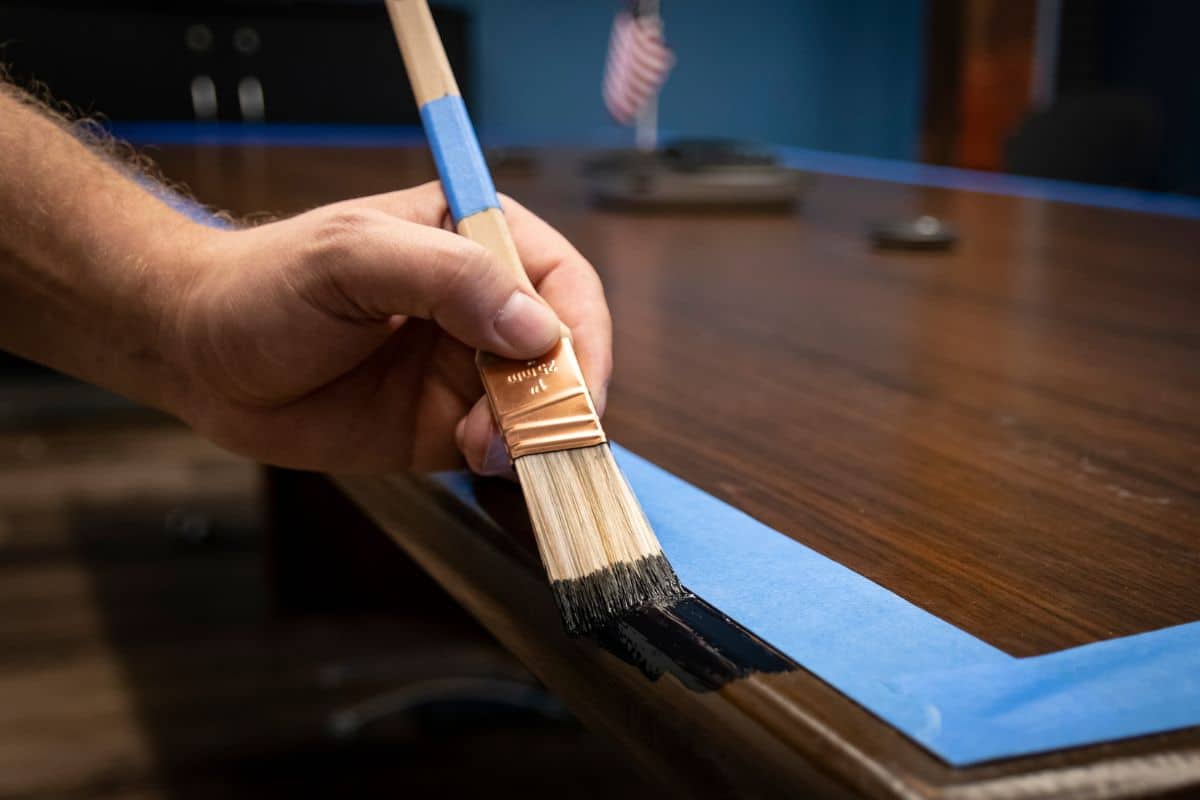
How Long Should I Wait Before Removing Painter's Tape On Wood?
Even with wood, there is a risk that painter's tape will peel off your fresh paint. That is why you should wait until the stain or paint is dry to the touch before removing the painter's tape. If the stain or paint feels gummy, then give it more time to dry before removing the tape.
In addition, if you wait too long, the tape can leave a residue on the surface. As a result, you will have to spend extra time and effort cleaning the surface.
If you apply multiple coats of paint or stain, keep the painter's tape on until the final coat. If you take the painter's tape off between coats, you can mess up your clean lines.
When it's time to remove the painter's tape, peel it at a 45-degree angle. Doing so will lift the tape from the surface without taking the paint with it.
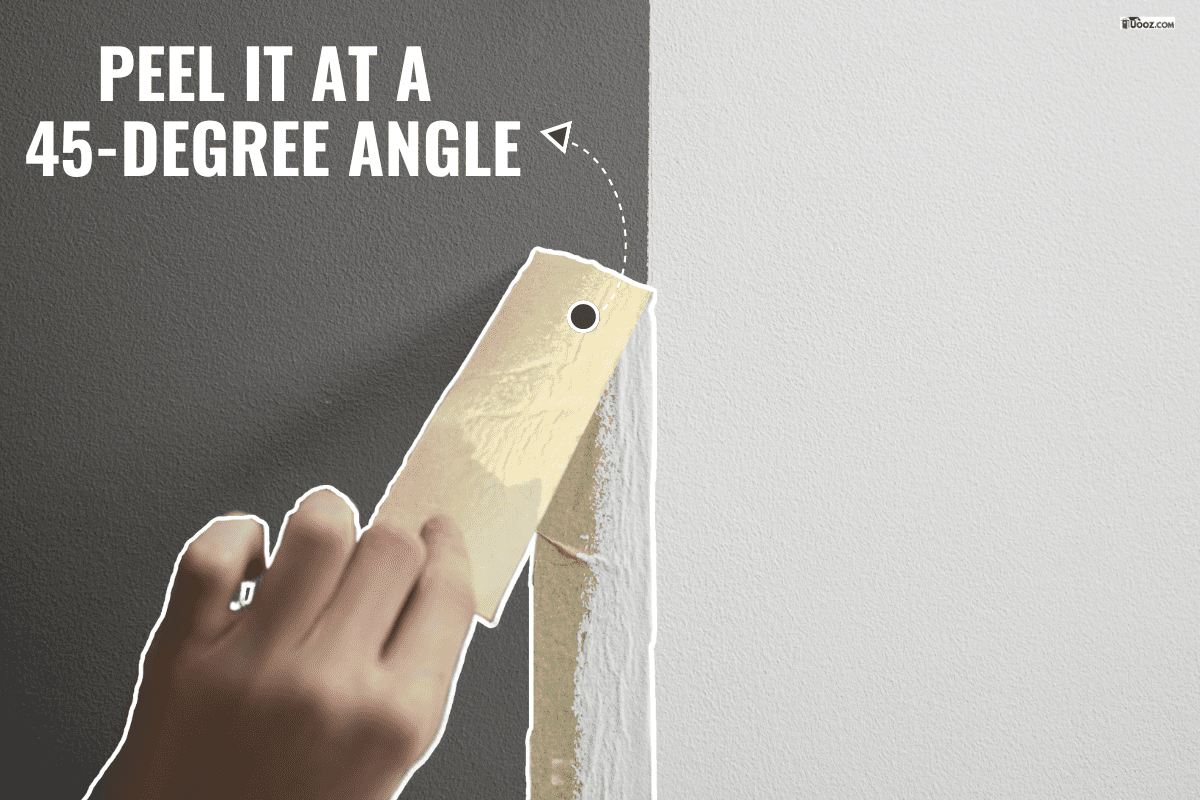
Do Professional Painters Use Painter's Tape?
It's not uncommon for professional painters not to use painter's tape. However, it does depend on the project and their experience.
For example, an apprentice or a painter with only a few years of experience under their belt may need to use painter's tape to ensure a quality job. Building the confidence and skillset to freehand lines that look professional can take years.
However, experienced painters will use what is called a "cutting in" method. This is done using an angled brush to create lines. It's typical to use this method when working around trim.
Lastly, it really depends on the project that the painter is working on. If it's an exterior home project, then it will likely involve using a paint gun. In this case, the windows, soffits, and other fixtures will need to be covered to mitigate overspray.
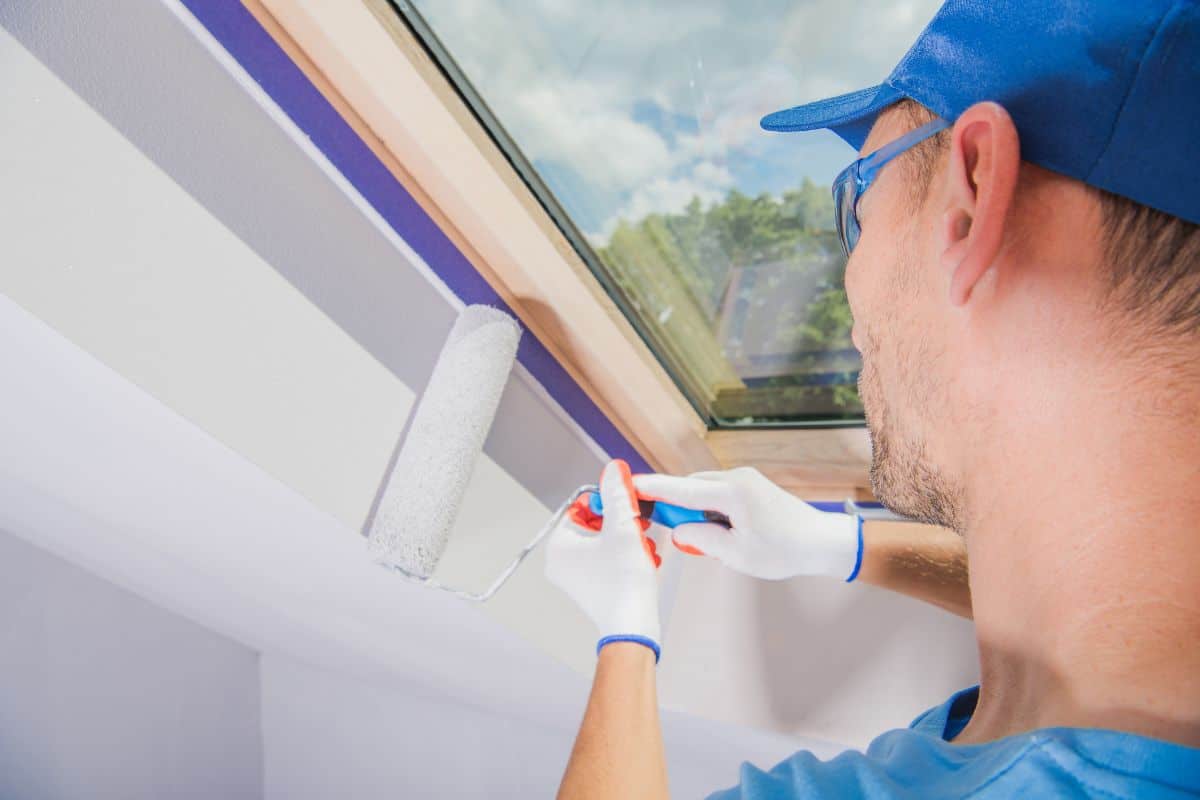
Why Does My Painter's Tape Keep Peeling Off?
Even the best painter's tape can peel off if your surface isn't prepped correctly. Painting is a meticulous job; if the area isn't clean and dry, your tape can peel off.
In addition, humidity can cause your painter's tape to peel off. The moisture can get underneath the tape, causing the adhesive to release from the surface.
If possible, apply painter's tape when the humidity is below 80%. In regions where humidity is high, you may need to wait to do your project until the dry season.
Lastly, make sure your tape is meant for the surface you need to paint. Several types of painter's tape are on the market, and the wrong one can cause problems. If you are unsure what painter's tape to use for your project, speak to a professional, and they will be able to point you in the right direction.
How Do You Prep Wood For Stain?
Wood is a different beast to prep than other surfaces. It is filled with bumps, ridges, and other imperfections, making it challenging to stain.
That's why sanding the wood is critical before applying the stain. Start with medium-grit sandpaper to remove the imperfections. Then switch to a finer sandpaper to get a smooth surface.
If there are any holes in the wood, then you will need to use a wood filler. After applying the wood filler, take your fine sandpaper to smooth out the surface.
While this can be time consuming, it's a vital part of staining or painting wood. Once your wood is prepped, you can apply your painter's tape (if needed) and begin staining your project.
If your project already has stain on it and you want to switch colors, then you may be able to get away without sanding. However, it would help if you still used a primer and sand any noticeable imperfections before applying the new stain.
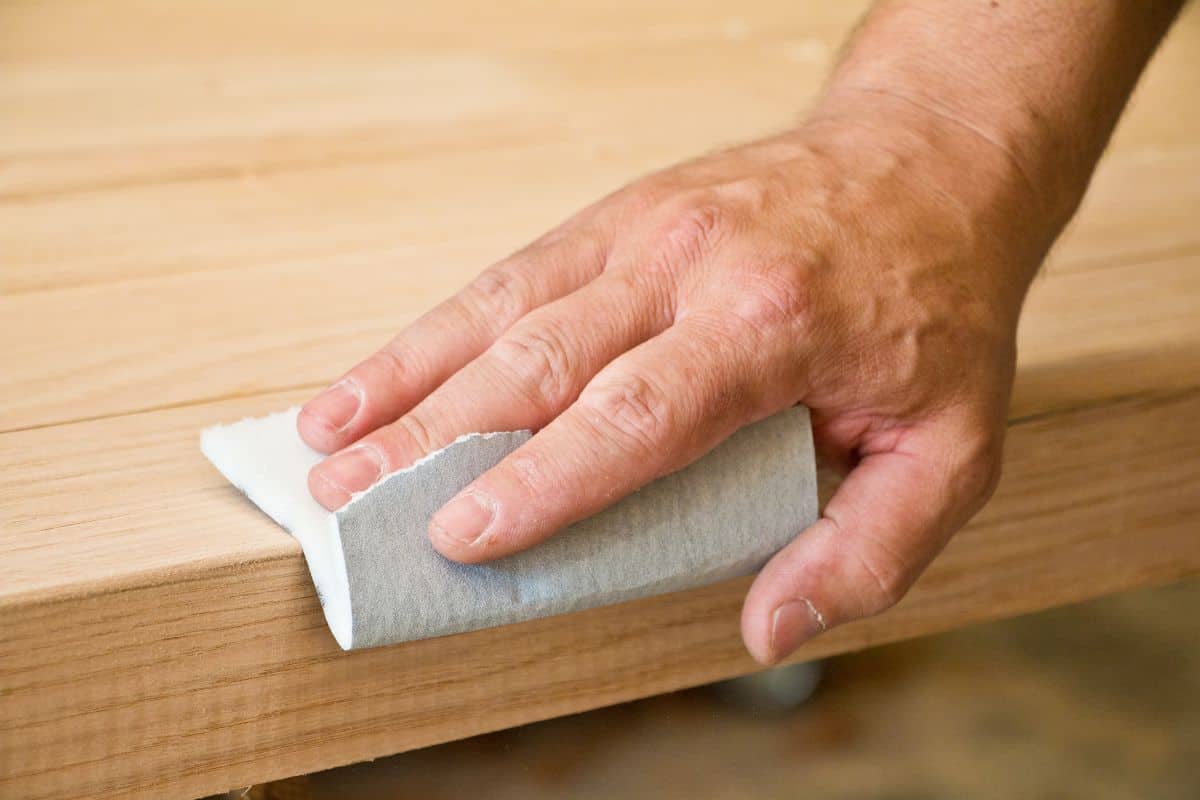
Will Stain Bleed Through Masking Tape?
While it's common for masking tape to be used for painting projects, it isn't the same as painter's tape. Painter's tape is meant specifically for painting projects and is less likely to bleed through and leave a residue behind.
Masking tape, on the other hand, is known for leaving a residue behind that is difficult to remove. In addition, it may not seal tight enough to keep stains or paint from seeping underneath.
Depending on your project, it may be fine to use masking tape; just be aware of the risks.
Final Thoughts
While there are always risks of stain bleeding through painter's tape, there are ways to prevent it. Be sure to properly prep your surface, use light coats, and brush away from the painter's tape. By following these tips, your project will be a success!
Made it to the end? Here are other articles you might find helpful:
How To Tell If Painter Did Two Coats
Can You Use Painters Tape On Carpet?
What Type Of Paint To Use On Bike Frame [Inc. Spray Paint Options]?
